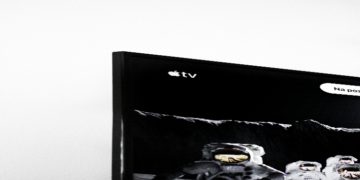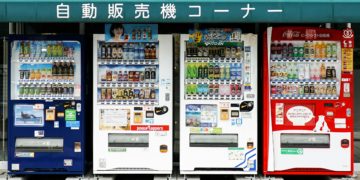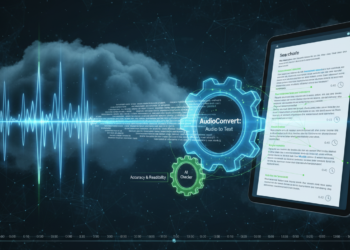Cafés, bakeries, bars, and small restaurants rely heavily on digital tools—but they also operate on extremely lean margins. That means every piece of hardware, from a point-of-sale tablet to a back-office laptop, has to earn its keep. The question many small hospitality owners quietly wrestle with is deceptively simple: Should we upgrade this old MacBook, or can it still be useful somewhere else?
The wrong decision wastes money; the right one stretches resources in a way that feels almost effortless.
The truth is that older MacBooks often have more functional life left than people assume. Hospitality workflows tend to be lightweight—browser-based systems, cloud dashboards, spreadsheets, scheduling software, training videos, queue displays. None of these tasks require a top-tier processor or the newest macOS features. The deciding factor isn’t age; it’s alignment. When the machine’s capabilities match the task’s demands, you don’t just save money—you create stability.
A surprising number of restaurants and cafés discover that the best place for an older laptop isn’t the bin, but a different role in the building. A MacBook that struggles with design workloads or heavy multitasking might still be perfect as a kitchen display screen, an ordering station, a reservation kiosk, or a staff training terminal. In some cases, it performs better in these roles because it’s stable, familiar, and predictable. That shift—from “primary device” to “purpose-built station”—is often all it takes to get another few years of value.
The decision is easier when broken into practical signals rather than vague feelings of “slowness” or “age.”
Here’s how hospitality owners can approach the choice with clarity.
First: look at what the device struggles with
If the machine slows down only during heavy tasks—video editing, large design files, dozens of browser tabs—this doesn’t mean it’s failing. It means it’s mismatched. Most hospitality tasks don’t stress a computer like that. A device that can’t keep up with creative work may still run a reservation dashboard or staff rota perfectly.
But if the slowdown affects even the simplest workflows—single-tab browsing, logging into cloud systems, opening spreadsheets—that’s a sign the internal storage or browser support is limiting everyday usability. In that case, repurposing is still possible, but only for roles with extremely light demands.
Second: consider the physical condition
A laptop with a worn battery or chipped casing may no longer be ideal for mobile use by managers, but it might be perfectly stable sitting on a counter plugged in all day. A cracked trackpad is a problem for a front-of-house workstation, but completely irrelevant for a device used only as a digital menu or a passive display.
Hardware condition influences where the machine belongs, not whether it belongs at all.
Third: evaluate compatibility, not performance
Most hospitality platforms run in the browser. That means the real question is:
Does the older macOS version still support a modern browser capable of loading these systems correctly?
If the answer is yes, the machine is almost always repurposable.
If the answer is no, the laptop’s useful life narrows to offline or semi-offline tasks—training videos, PDF storage, local inventory sheets, supplier logs, etc.
This is where many venues adopt a hybrid strategy: keep older Macs in limited roles while acquiring a refurbished MacBook for the newer, browser-heavy front-of-house systems. It’s a middle-path approach that avoids overspending while keeping the team’s tools reliable.
Fourth: identify where the business actually feels “friction”
It’s rarely about raw speed. Hospitality teams feel friction in repeated explanations, unclear communication, paperwork, and systems that waste staff movement or attention.
The question becomes:
Can the older MacBook eliminate or reduce any of this friction?
Examples where the answer is often yes:
- A kiosk that lets customers join a waitlist without interrupting staff
- A screen showing today’s specials or sold-out dishes
- A training corner for new staff to watch short onboarding videos
- A receiving station in the stockroom for deliveries and supplier checklists
- A quiet back-office desk where scheduling is updated once per week
If the laptop solves a real operational annoyance, it’s worth keeping.
Fifth: calculate cost-neutral improvement
Before deciding to replace a machine, compare the cost of upgrading to the cost of optimising.
Sometimes a £30 stand, a £40 hub, and a bit of software cleanup turn an “old, slow laptop” into a reliable fixed-purpose workstation.
Other times, the cost of accessories approaches the value of the device itself—and replacement becomes logical.
The point isn’t to race toward the cheapest option, but to choose the one that delivers the most stability for the business.
Pulling the decision together
Upgrading makes sense when:
• The laptop needs to handle heavy multitasking
• Browser support has fallen behind critical software
• Staff rely on the device constantly and notice the slowdown
• Repairs outweigh the remaining value
• You need features only newer Apple Silicon models support (dual monitors, hardware decoding, etc.)
Repurposing makes sense when:
• The slowdown appears only in high-demand tasks
• The machine still runs simple workflows smoothly
• The operating system supports one modern browser reliably
• You can assign the device a focused, predictable role
• The business can eliminate a daily friction point by reusing it
What emerges is a simple truth: most hospitality businesses don’t need to replace older MacBooks outright. They need to place them correctly. A device that no longer makes sense at the manager’s desk can thrive as a check-in station. A MacBook that struggles with multi-tab admin work may still loop digital menu slides for years without complaint.
In the end, the smartest technology strategy for cafés and small venues isn’t built around constant upgrading—it’s built around smart redeployment.
When a machine has enough stability to support a single workflow, it has value. The goal is to match that remaining value to a real business need and avoid unnecessary spending. And when a replacement is eventually required, choosing a refurbished MacBook for the next cycle keeps the budget healthy without sacrificing function.












































































